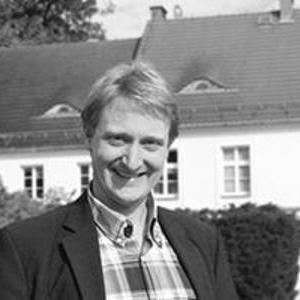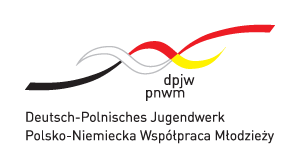
The Memorial Site at Krzyżowa maintains the memory not only of the resistance of the Kreisau Circle against National Socialism, but also of the activities of the anti-communist opposition in Central and Eastern Europe. It was clear from the beginning that conveying this connection would not be easy, after all, Krzyżowa as a place is historically authentic only in the first case. In contrast, the anti-communist opposition is connected to Krzyżowa through many of the founding fathers and founding mothers of the Foundation who came from opposition circles. By conveying the history of both oppositions in a comparative way, the Memorial Site at Krzyżowa goes beyond understanding the resistance movement from the historical perspective of one nation's experience.
Based on our long-term work at Krzyżowa we know very well that a comprehensive understanding of opposition attitudes and activities on the basis of historical events and personalities is not an easy task. Such a systematic reflection seems to me to be necessary especially in the current situation where people recklessly use terms like dictatorship or resistance - especially opponents of restrictions to stop the corona-pandemic.
- "Resistance" can be defined as many different kinds of social or political refusal or opposing action This basic meaning contains neither a valuation nor a statement about motives or goals, but is first and foremost about a where against.
- At the same time, I note that the term "resistance" evokes positive connotations in German public opinion. This comes from the fact that democratic societies provide many opportunities to express or organize resistance, which we variously call: "demonstration", "opposition", etc. The term "resistance" falls, which makes sense, mainly in the case of non-democratic regimes, especially authoritarian regimes, and dictatorships. Such use of the word involves both assertion about a given social system and value judgments (just vs. unjust).
- Returning to history: in some historical opposition groups, opposition to dictatorship was a decisive motive and an important unifying element. Nevertheless, for a resistance movement to emerge - and this is where the Kreisau Circle becomes important - a "for" was needed in addition to the "against".Therefore a part of resistance is a vision of an alternative that, for example, emphasizes certain values or seeks to establish a particular social system. During the Nazi dictatorship, communist groups and conservative circles had very different political ideas. The result of these different ideas was the fragmentation of the German resistance movement.
- The permanent exhibition "Rejecting the Lie" at Krzyżowa presents people and groups who were active in opposition to the totalitarian regimes. The juxtaposition of the two systems as well as the selection of people and groups in the exhibition allows visitors to search for the spiritual basis of resistance. Christian beliefs often play a role in the individuals and groups presented in the exhibition. Based on very different biographical backgrounds and in view of the multiple failures of the churches in Hitler's Germany, the Kreisau Circle first had to develop a commitment gradually and laboriously to Christianity as a basic value system in the preamble to its plans for a new order.
- Resistance is more than an attitude. All totalitarian regimes caused emigration, and the opposite attitude can also be formed through "internal emigration. However, for one to speak of resistance, the people involved must also become active. The actions they take are therefore either destructive (sabotage, assassination) or constructive (creating solutions).
- People's motives for taking oppositional action against the dictatorship were as varied as their capabilities. Claus Schenk von Stauffenberg had quite different reasons for carrying out an assassination attempt against Hitler than, for example, the worker Georg Elser, who had already attempted an assassination attempt himself in 1938; in the former case, the decisive factor was mainly the difficult situation of the Wehrmacht in 1943, and in the latter case, the deterioration of the economy and living conditions. Although the motives were varied, what seems to me to be characteristic of all opposition activities is a certain altruism or sense of responsibility for society. We would not count as part of the resistance a person who was primarily concerned with his own benefit or avoiding personal loss.
- The decision to join the active resistance movement requires courage on the part of everyone. Since acting in the resistance movement was considered treason, incitement against the state, etc. in dictatorships and punished accordingly, joining the resistance movement always meant considerable personal danger, which was consciously decided upon. It is not comparable to the risk of a warning or a fine borne by vaccination or mask opponents in the corona pandemic.
In the early years of the Krzyżowa Foundation, the parallels between the Kreisau Circle and the anti-communist civil rights movements in Central and Eastern Europe were especially recognized by Ludwig Mehlhorn, himself a Protestant active in the opposition during the GDR era. The exhibition "Rejecting the Lie", of which he is co-author, shows the great variety of forms of resistance, among them pilgrimages, strikes, programmatic texts such as Charter 77, Helsinki groups, ecological, pedagogical, or church involvement. With the help of examples, Ludwig Mehlhorn tried to create a systematic characterization of resistance. However, this text did not appear until the exhibition catalog, published posthumously in 2012.
Mehlhorn focuses on resistance that is embedded in a group or environment. He even illuminates the importance of cross-border networks. In contrast, there is a certain uncertainty or powerlessness when it comes to isolated, individual activists. The exhibition catalog does not mention the spectacular self-immolations of Ryszard Siwiec in 1968 in Warsaw or Jan Palach in 1969 in Prague, even though the former appears in the exhibition and the latter plays a prominent role in the Czech culture of memory. The question how constructive collective action, embedded in a group or movement, is for resistance deserves a separate discussion. In any case, the exhibition's co-author Katharina Madoń-Mitzner points to the danger of "sacralization" if the main focus shifts from action to the "spiritual beauty" of the oppositionists.
One last interesting observation: Opposition activities cannot be defined in terms of success. The dissident Václav Havel, whose essay "The Attempt to Live in Truth" is quoted in the title of the German-language version of the exhibition, was admittedly led many times to prison by his opposition activities, but eventually also to the office of the president. At first, the opposition work of the Kreisau Circle also seemed unsuccessful. From today's perspective, however, it had a great impact on, for example, the German-Polish understanding, the organization of the Reconciliation Mass in 1989 and the creation of Krzyżowa as we know it today.
Oliver Engelhardt
Dr. Oliver Engelhardt is a former volunteer of the Krzyżowa Foundation and has worked for many years on its boards.
The original text was written in German language.



